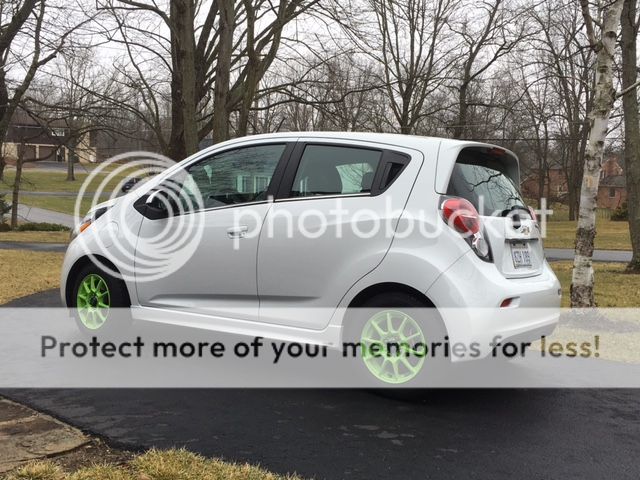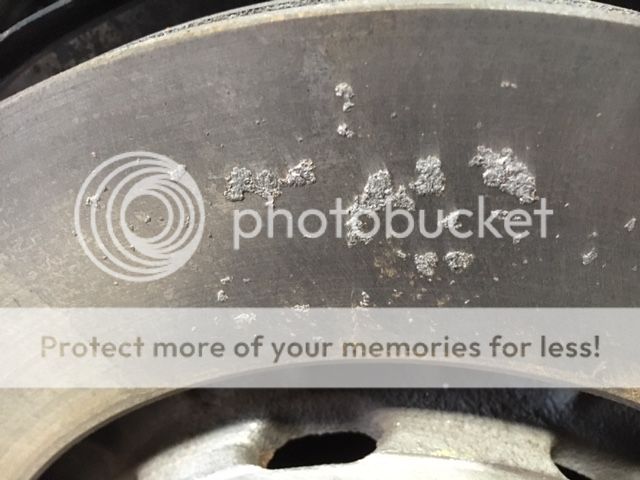JMenacker
Well-known member
Our white 2015 is my daily commuter (30 miles round trip). Preference is a summer/winter wheel and tire package over all season tires. Tire rack had a nice set of Sparco wheels on sale - however color choice left was anything but silver.
v
Never had colorful wheels before but only due to what I was used to before. Happy with 'em so far. I really do like the Spark EV factory wheels so am glad that the GM wheels will avoid salt encrustment.
Of greater concern was finding fairly heavy deposits of brake pad on the front two rotors. Pic below is from passenger side. Driver side was heavier with a brake pad footprint.

Brass wire brushes on a drill were used to remove the deposits. No readily noticeable pad material remained on the rotors after wire brushing.
Braking seems fine now, but the pad material left on the rotors obviously is no longer on the pads. Has anyone else here experienced substantial transfer of brake pad material to rotors? Would it be wise to plan on replacing pads ASAP? Less than 3K on the car - not sure if this exceeds normal wear and tear but assume anything to do with brake pads would not be covered by the manufacturer.
My commute is a country road with hardly any other traffic. Brake use is minimal as regen is adequate to reduce speed as needed for all but complete stops. OTOH there are critters who don't look both ways before crossing the road, so there has been a half dozen or so cases with panic stop braking events. I don't believe that there were any events where a panic stop was followed by an extended stop with foot on brake where the hot pads might remain in contact with the rotor long enough to cause bonding.
Regards,
Joe M in WV
Two 2015 Spark EVs
v

Never had colorful wheels before but only due to what I was used to before. Happy with 'em so far. I really do like the Spark EV factory wheels so am glad that the GM wheels will avoid salt encrustment.
Of greater concern was finding fairly heavy deposits of brake pad on the front two rotors. Pic below is from passenger side. Driver side was heavier with a brake pad footprint.

Brass wire brushes on a drill were used to remove the deposits. No readily noticeable pad material remained on the rotors after wire brushing.
Braking seems fine now, but the pad material left on the rotors obviously is no longer on the pads. Has anyone else here experienced substantial transfer of brake pad material to rotors? Would it be wise to plan on replacing pads ASAP? Less than 3K on the car - not sure if this exceeds normal wear and tear but assume anything to do with brake pads would not be covered by the manufacturer.
My commute is a country road with hardly any other traffic. Brake use is minimal as regen is adequate to reduce speed as needed for all but complete stops. OTOH there are critters who don't look both ways before crossing the road, so there has been a half dozen or so cases with panic stop braking events. I don't believe that there were any events where a panic stop was followed by an extended stop with foot on brake where the hot pads might remain in contact with the rotor long enough to cause bonding.
Regards,
Joe M in WV
Two 2015 Spark EVs
